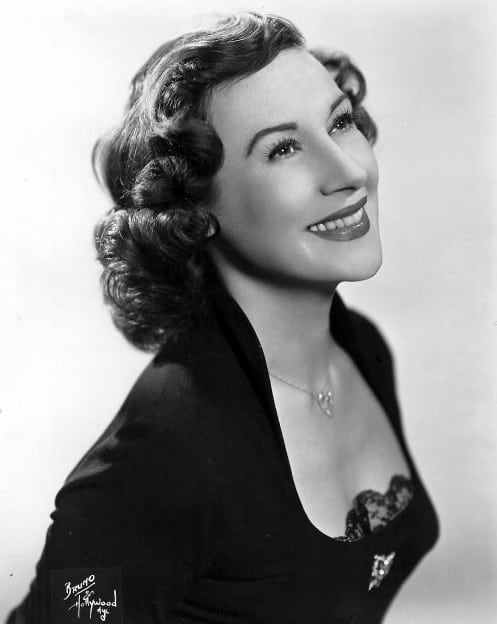A pioneer in both radio and television, Arlene Francis was “the third most recognized woman in the United States,” according to Newsweek and TV Guide, and the highest-earning game show panelist during the 1950s.
Arline Francis Kazanjian was born on October 20, 1907, in Boston, Massachusetts. the daughter of Leah (née Davis) and Aram Kazanjian. Her grandparents were killed in the Hamidian Massacres when her father Aram Kazanjian was studying art in Paris at the age of 16. He immigrated to the United States and became a portrait photographer, opening his own studio in Boston, marrying Leah Davis. When Francis was seven years old, her father moved the family to Manhattan.
She attended Finch College, but her strict father forbade her to pursue a career in the theater. He set her up with her own boutique on Madison Avenue, but soon enough she made changes in her name to go and make her own way in show business. Her natural delivery and easy characterizations landed her roles on serial after serial, many of them running simultaneously on radio. In 1938 she became the female host of the radio game show What’s My Name throughout the program’s long run on ABC, NBC, and Mutual networks until it ended in 1949. In 1943, she began as host of a network radio game show, Blind Date, as television was dawning and radio drama was nearing its end. It made the move to television, and Francis hosted it on ABC and NBC television from 1949–52, becoming the first woman to ever host a TV game show.
Francis became known for her long-standing role as a panelist on the television weekly game show What’s My Line? on which she regularly appeared for 25 years, from 1950 to 1975 on both the network and syndicated versions of the show. The panel would play a version of twenty questions with a mystery guest and try to ascertain the guest’s occupation. Newsweek dubbed her “the first lady of television.”
She appeared on other game shows, including Match Game, Password, To Tell the Truth, and other programs. At the height of her career in the fifties, Francis could be seen on as many as three programs per week spread over all three networks. She was a regular contributor to NBC Radio’s Monitor in the 1950s and 1960s, and hosted a midday interview show that ran on WOR from 1961 until 1990.
Francis was a pioneer for women on television, one of the first to host a program that was not musical or dramatic in nature. From 1954-57 she was host and editor-in-chief of Home, NBC’s hour-long daytime magazine program oriented toward women, accompanying Today and Tonight. Home was the first TV newsmagazine of its kind, outfitted with an expensive revolving set and TV’s first use of cameras suspended from the studio ceiling. She hosted Talent Patrol in the mid-1950s.
She performed in many local theatre and off-Broadway plays, with 25 Broadway plays to her credit through 1975. She acted in a few Hollywood films, like Murders in the Rue Morgue (1932), the film version of Arthur Miller’s play, All My Sons (1948), One, Two, Three (1961), The Thrill of It All (1963) and, in 1968, the television version of the play Laura, which she had played on stage several times. Her final film performance was in Fedora (1978).
She wrote an autobiography in 1978 entitled Arlene Francis: A Memoir with help from longtime friend Florence Rome. She had previously written That Certain Something: The Magic of Charm (1960) and a cookbook, No Time for Cooking (1961). She was a member of the Peabody Awards Board of Jurors from 1980-82.
Francis was married twice. Her first marriage, from 1935 to 1945, was to Neil Agnew, an executive of Paramount Pictures; they divorced in 1945.Francis’s second marriage was to actor and producer Martin Gabel, from 1946 until his death in 1986. They had a son, Peter Gabel, co-founder of the Arlene Francis Center for Spirit, Art and Politics near San Francisco in 1996.
She moved from New York in 1993 to enter a nursing home in San Francisco, where she passed away at the age of 93 on May 31, 2001. She was interred in Roosevelt Memorial Park in Trevose, Pennsylvania.
